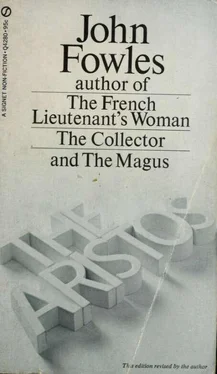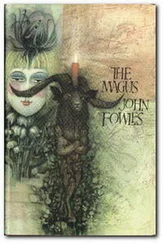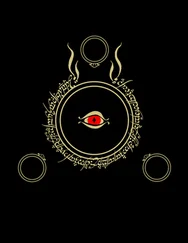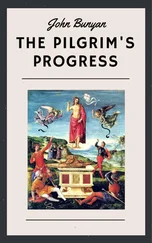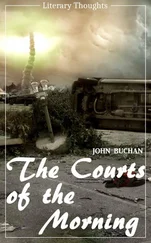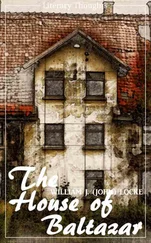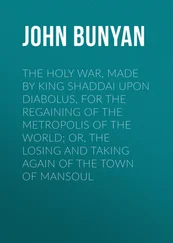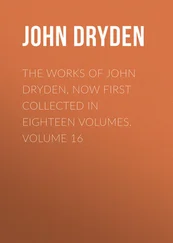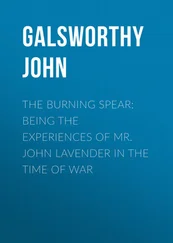John Fowles - The Aristos
Здесь есть возможность читать онлайн «John Fowles - The Aristos» весь текст электронной книги совершенно бесплатно (целиком полную версию без сокращений). В некоторых случаях можно слушать аудио, скачать через торрент в формате fb2 и присутствует краткое содержание. Год выпуска: 1970, Издательство: New York, N.Y. : New American Library, Жанр: Философия, на английском языке. Описание произведения, (предисловие) а так же отзывы посетителей доступны на портале библиотеки ЛибКат.
- Название:The Aristos
- Автор:
- Издательство:New York, N.Y. : New American Library
- Жанр:
- Год:1970
- ISBN:нет данных
- Рейтинг книги:3 / 5. Голосов: 1
-
Избранное:Добавить в избранное
- Отзывы:
-
Ваша оценка:
- 60
- 1
- 2
- 3
- 4
- 5
The Aristos: краткое содержание, описание и аннотация
Предлагаем к чтению аннотацию, описание, краткое содержание или предисловие (зависит от того, что написал сам автор книги «The Aristos»). Если вы не нашли необходимую информацию о книге — напишите в комментариях, мы постараемся отыскать её.
The Aristos — читать онлайн бесплатно полную книгу (весь текст) целиком
Ниже представлен текст книги, разбитый по страницам. Система сохранения места последней прочитанной страницы, позволяет с удобством читать онлайн бесплатно книгу «The Aristos», без необходимости каждый раз заново искать на чём Вы остановились. Поставьте закладку, и сможете в любой момент перейти на страницу, на которой закончили чтение.
Интервал:
Закладка:
36 But this suggests that the artist is incapable of any higher aspiration than that of presenting a mirror to the world around him. This is not to deny that a great deal of the ‘black’ art of our time is, alas, historically justifiable; but it is very often a result of the pressures unfairly put upon art by society. The artist creates blackly because society expects him to; not because he essentially wants to.
37 Black art may bring us a certain kind of pleasure, not only because we are secretly violent, cruel and nihilistically chaotic ourselves, and not only because the emotions such art arouses afford a vivid contrast to our day-by-day lives in a safe society, but because those grey-fearing lives gain a reality, colour and validity they lack if they have no such contrast easily accessible to them. This violent death is my safe life; this distorted shape is my symmetry; this meaningless poem is my clear meaning.
38 One of the deepest pleasures of tragedy is simply that we survive it; the tragedy might have, but has not, happened to us. We not only experience the tragedy empathetically; we have the subsequent survival.
39 There is thus a very deep-rooted sense in which the public never takes ‘black’ art at its face value. It is indeed a frequent defence of pornography that whatever its apparent intentions, its final effects are often highly moral. The spectacle of Vice’ and perversion serves to remind people of their own virtues and their normality. Sadism is far more likely to provoke increased respect for others than further sadism; and so on. But whichever view one takes – that such art corrupts society or that it secretly benefits it – the effect on the artist must be bad.
40 Art has to provide today what ignorance and social and physical conditions provided in the past: insecurity, violence and hazard. This is a perversion of its true function.
41 It is this unnatural role that accounts for a partiallarly common manifestation of guilty conscience among many so-called avant-garde artists; the attempt to suppress the creator from the creation, to reduce the artefact to the status of a game with as few rules as possible. Paintings where the colours and the shapes and the textures are a matter of hazard; music where the amount of improvisation demanded of the players reduces the composer to a cipher; novels and poems where the arrangement of words or pages is purely fortuitous. The scientific basis for this aleatory art is perhaps the famous, and famously misunderstood, principle of mdeterminacy; and it also springs from a totally mistaken notion that the absence of an intervening, in our everyday sense of intervening, God means that existence is meaningless. Such art is, though apparently self-effacing, absurdly arrogant.*
42 An artist can choose not to be an artist, but he cannot be an artist who has chosen not to be an artist.
ARTISTS AND NON-ARTISTS
43 The artistic experience, from the late eighteenth century onwards, usurps the religious experience. Just as the medieval church was full of priests who should have been artists, so our age is filled with artists who would once have been priests.
44 Many modern artists would no doubt dispute that they are priests manques. That is because they have substituted the pursuit of artistic ‘truth’ for the pursuit of good. There was so much injustice on every doorstep, once; it was easy to know what good meant in terms of action. But now even in – didactic art the pursuit is much more of the right aesthetic or artistic expression of the moral than of the moral itself.
45 It is true that the best right expression of the moral best serves the moral; the style is the thought. But an excessive pre-occupation with the style of the thought tends to produce a devaluation of the thought: just as many priests became so pre-occupied with ritual and the presentation of doctrine that they forgot the true nature of the priesthood, so have many artists become so blind to all but the requirements of style that they have lost all sight of, or pay no more than lip service to, any human moral content. Morality becomes a kind of ability to convey.
46 The growth of industrial civilization, the stereotyped work processes, the population surge, the realization, in an age of close international communication, that men are psychologically more similar than different: all these factors drive the individual to the individualizing act, the act of artistic creation: and above all to the creation that expresses self. Drink, drugs, promiscuity, unkemptness, the notorious conventions of anticonvention, are explicable statistically as well as emotionally.
47 The ominous innumerability of our world, the endless repetition of triviality, breeds the nemo. Our modern saints are the damned: the Soutines and the Alban Bergs, the Rilkes and the Rimbauds, the Dylan Thomases and the Scott Fitzgeralds, the Jean Harlows and the Marilyn Monroes. They are to us what the martyrs were to the early church; that is, they all died for the worthiest of causes – immortality of name.
48 How else can we explain the popularity of romanced biographies of artists and cheap biographical films? These new hagiographies, like the old ones, are less concerned with the ultimate achievements and motives of their subjects than with the outward and sensational facts of their private lives. Van Gogh with a razor in his hand; not with a brush.
49 But this produces an imitative insincerity in many modern artists. The great artists who have gone to the dark poles have been driven there. They are always looking back towards the light. They have fallen. Their imitators did not fall; they jumped down.
50 The lives of ‘bohemian’ artists, of les grands maudits , are more interesting to the public than their works. They know they could never make the works; but they might have lived the life.
51 Increasingly art has to express what the nonscientific intellectual élite of the world think and feel; it is for the top of the pyramid, the literate few. When the chief fields for intellectual expression and the main channels for the stating of personal views of life were theology and philosophy, the artist was able to remain in closer contact with a public. But now that art has become the chief mode of stating self, now that the theologian-philosopher is metamorphosed into the artist, an enormous gap has sprung.
52 The only persons who might have stopped this schism between the artist and the non-artist are the critics. But the more obscure and the more ambiguous a work of art the more need there is of interpretation and interpreters. There are thus excellent professional reasons for critics to encourage the schism. There is also a marked tendency to lycanthropism: to being a creator by day and a critic by night.*
53 Our society requires the artist to live like this, and to present an image like this, just as by its tedium and its conformity it obliges him to create ‘black’ art and entertainment. From the point of view of society, the artist thus dictated to and obeying the dictate is fulfilling a useful function. But my belief is that such a function is not the function of art.
54 The true primary function of art is not to remedy the faults and deficiencies of society, to provide salt for the ordinary; but in conjunction with science to occupy the cestral position in human existence.
55 Because in general we approach the arts and entertainment from outside, because we go to art, we regard it as external to the main part of our life. We go to the theatre, to the cinema, the opera, the ballet; to museums; to sports fields (for a part of all great games is as much art as theatre or ballet). Even our reading is outside the main occupations of our day; and even the art that is piped into our homes we feel comes from outside. This holding at a distance of art, this constant spectatoring, is thoroughly evil.
Читать дальшеИнтервал:
Закладка:
Похожие книги на «The Aristos»
Представляем Вашему вниманию похожие книги на «The Aristos» списком для выбора. Мы отобрали схожую по названию и смыслу литературу в надежде предоставить читателям больше вариантов отыскать новые, интересные, ещё непрочитанные произведения.
Обсуждение, отзывы о книге «The Aristos» и просто собственные мнения читателей. Оставьте ваши комментарии, напишите, что Вы думаете о произведении, его смысле или главных героях. Укажите что конкретно понравилось, а что нет, и почему Вы так считаете.
